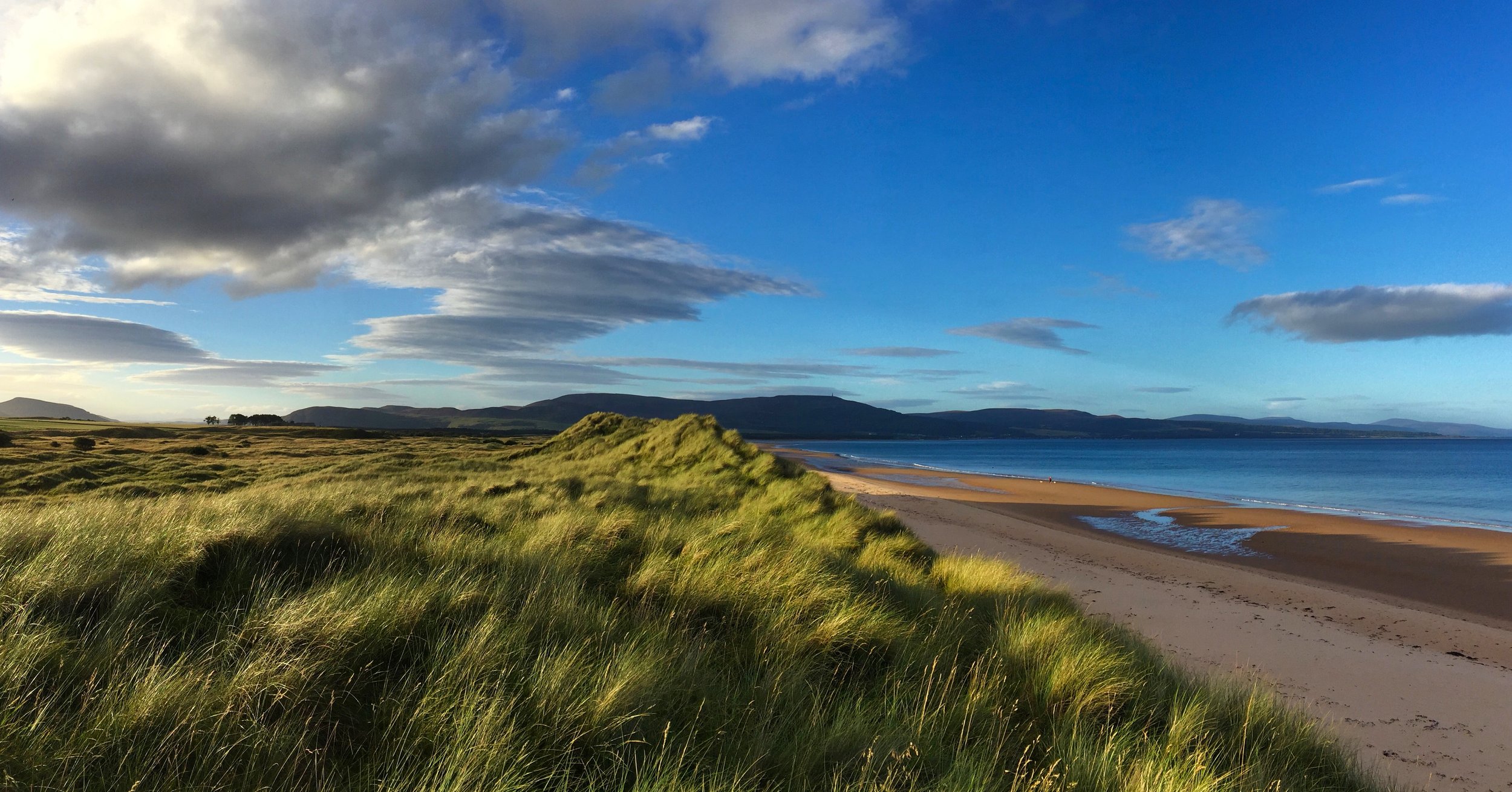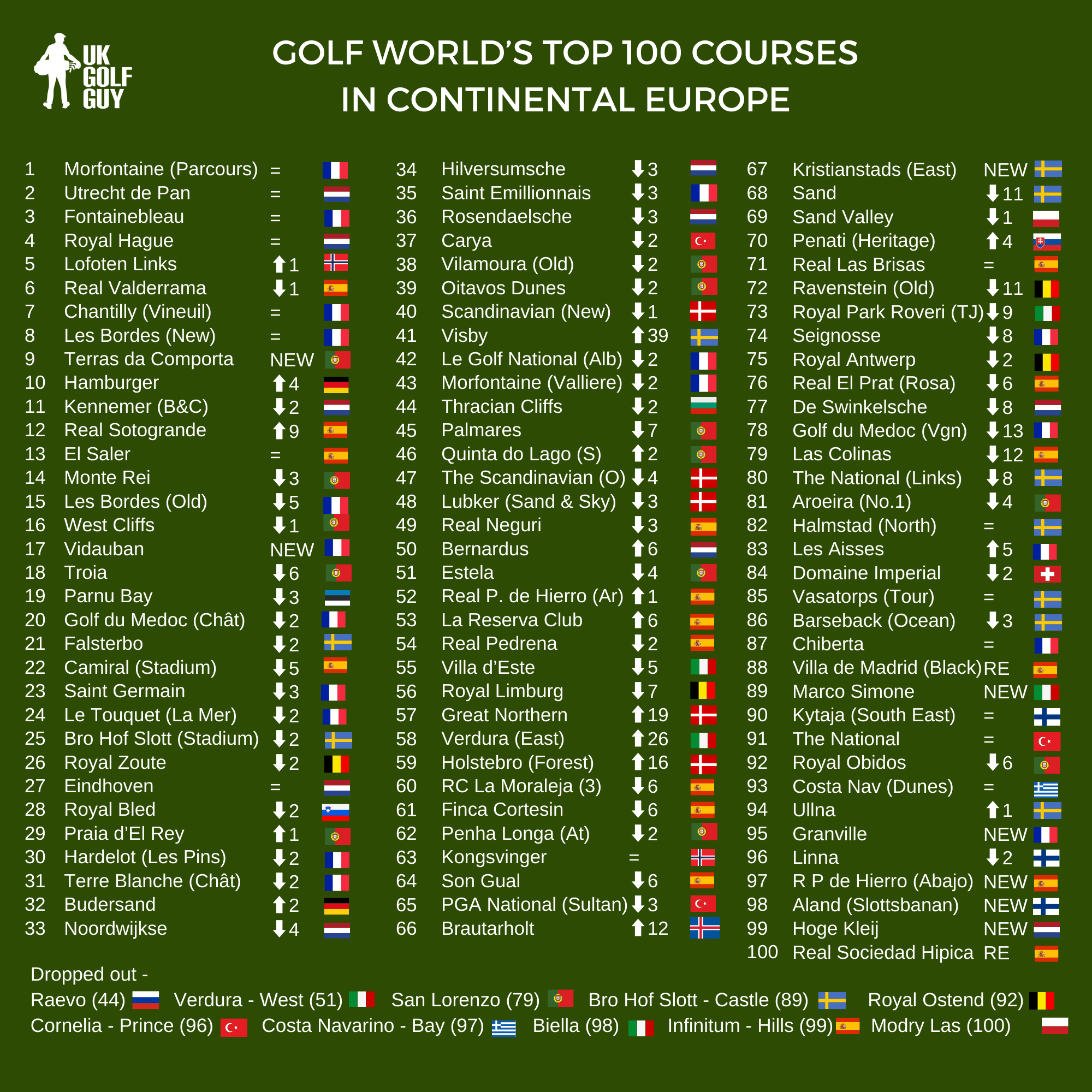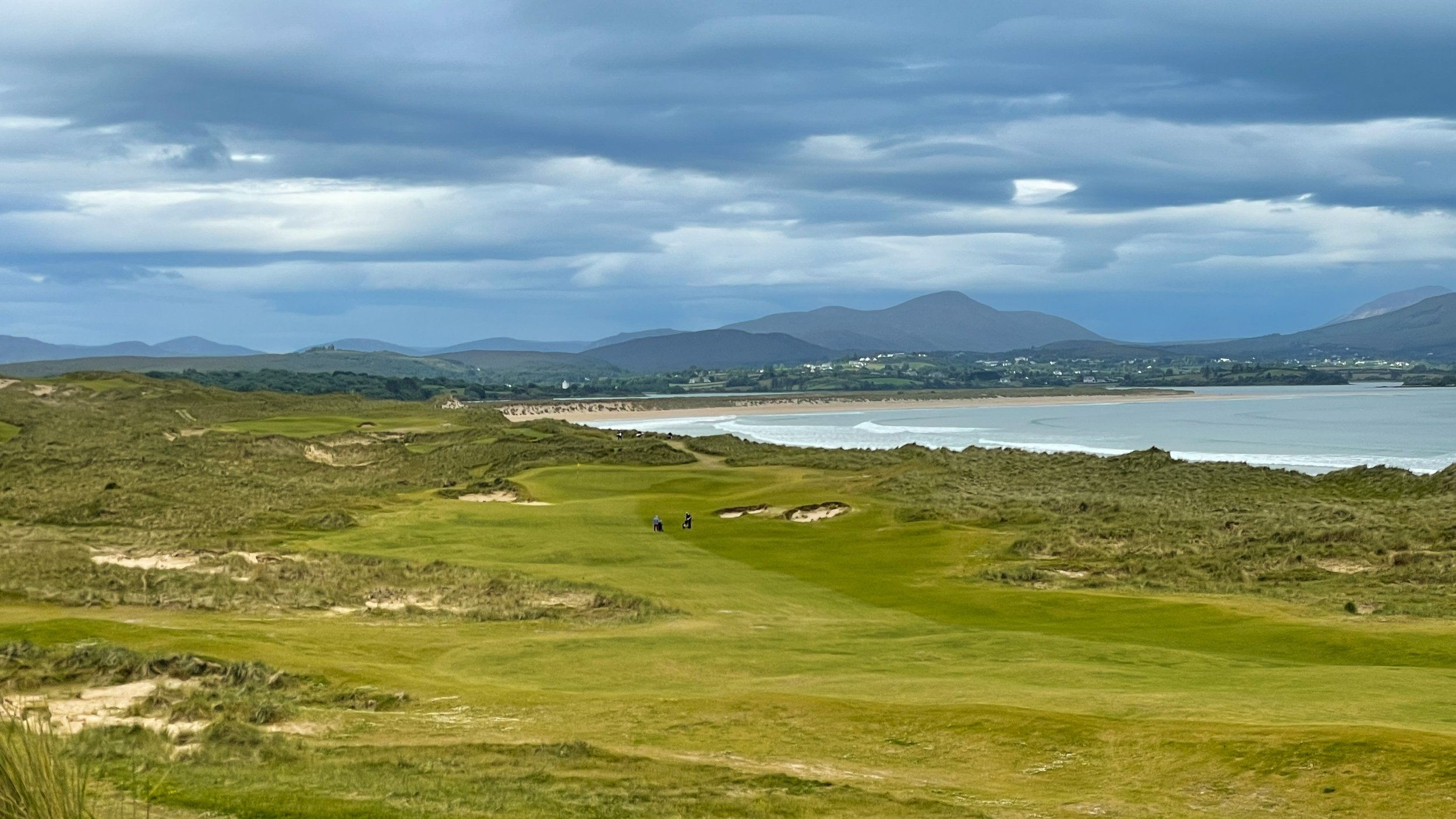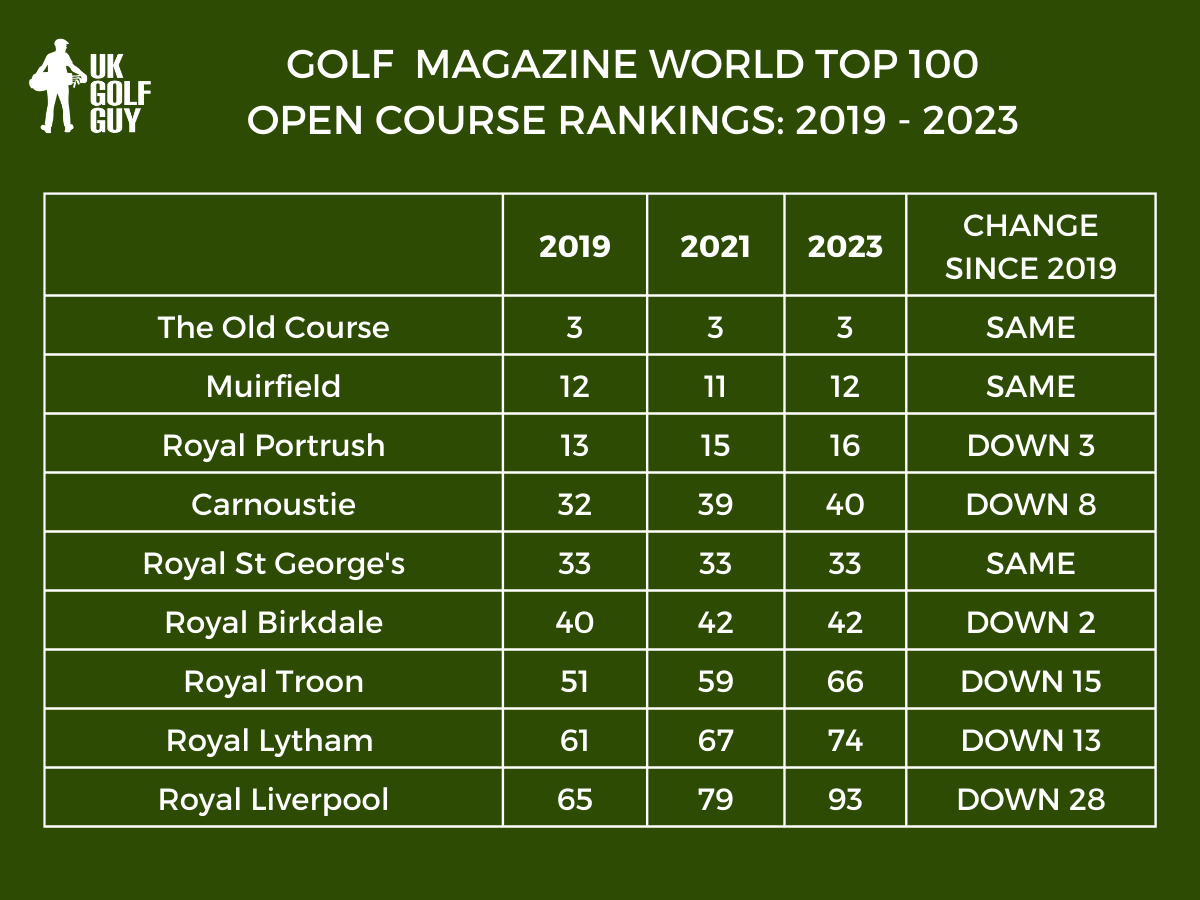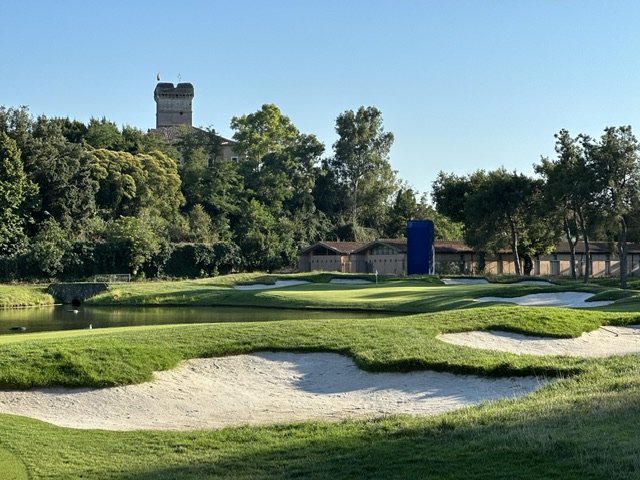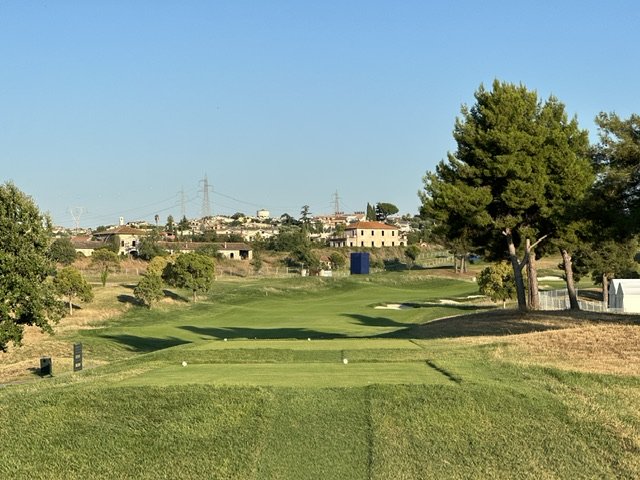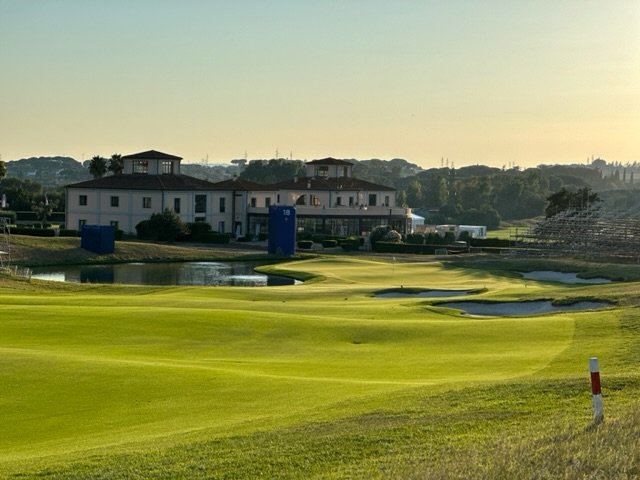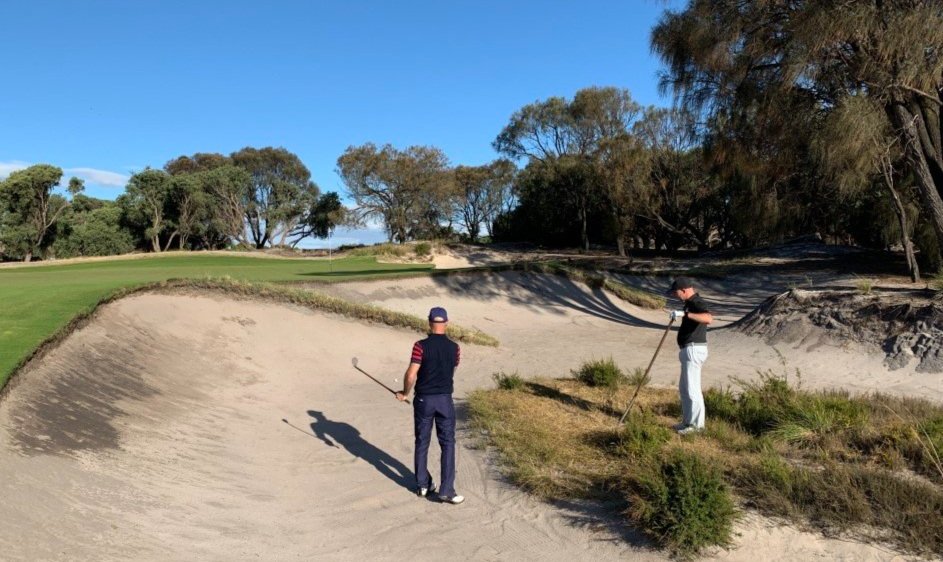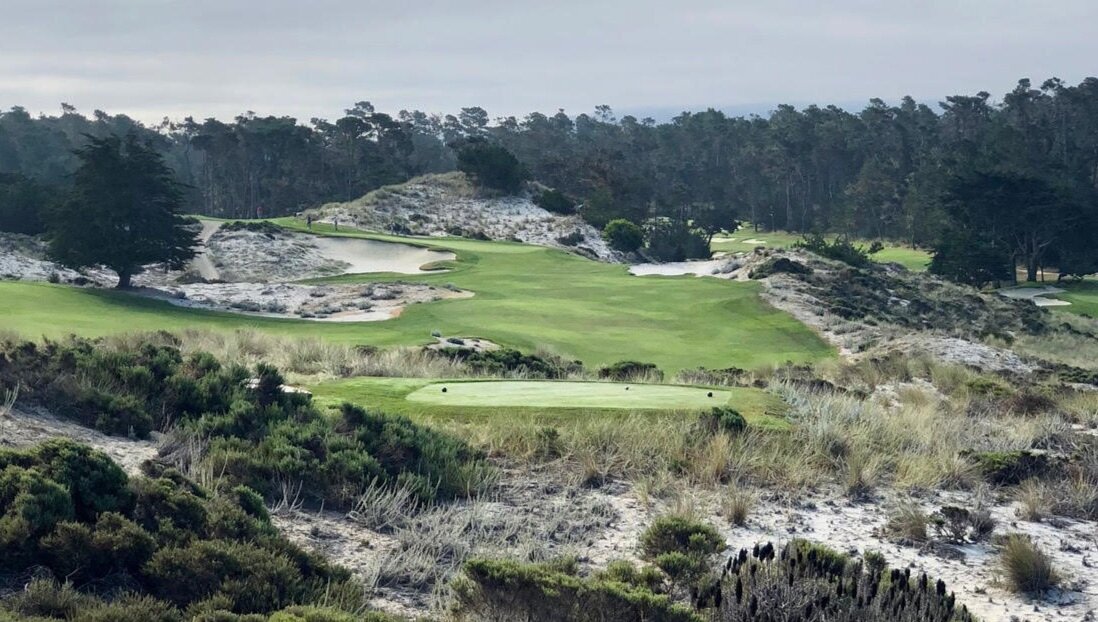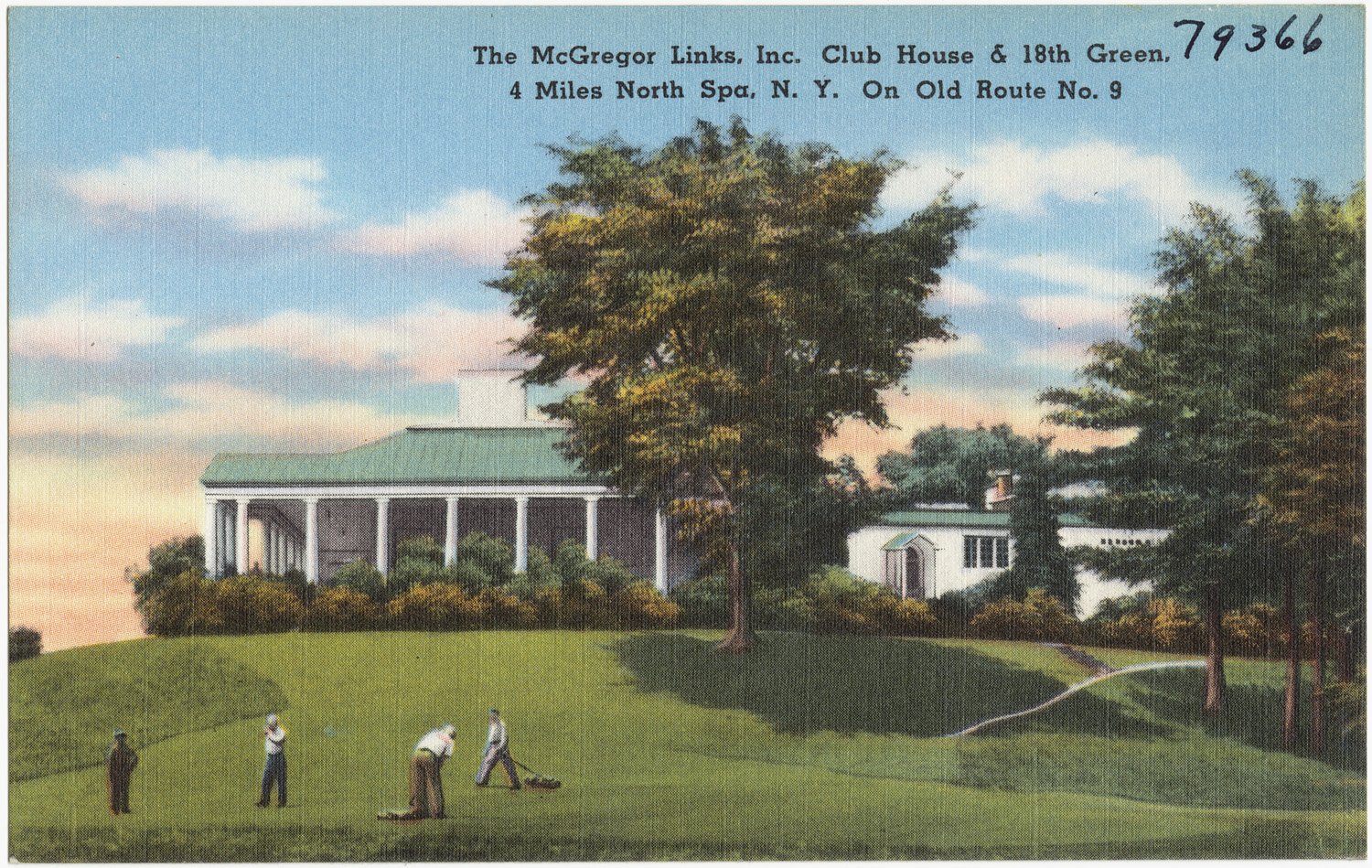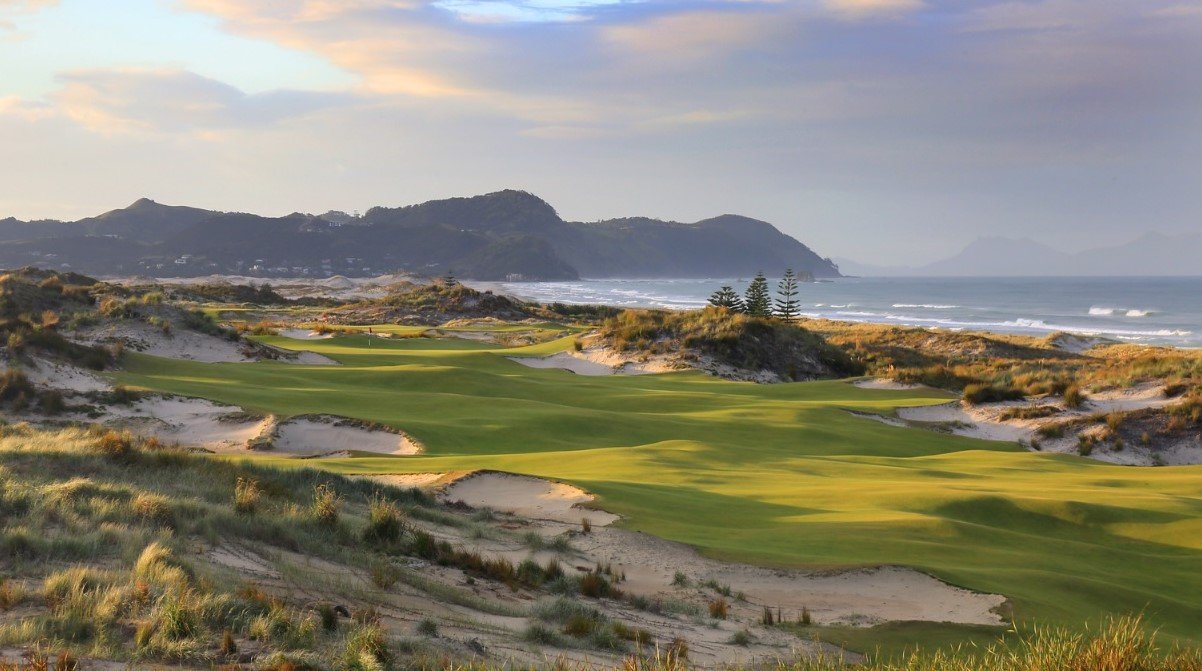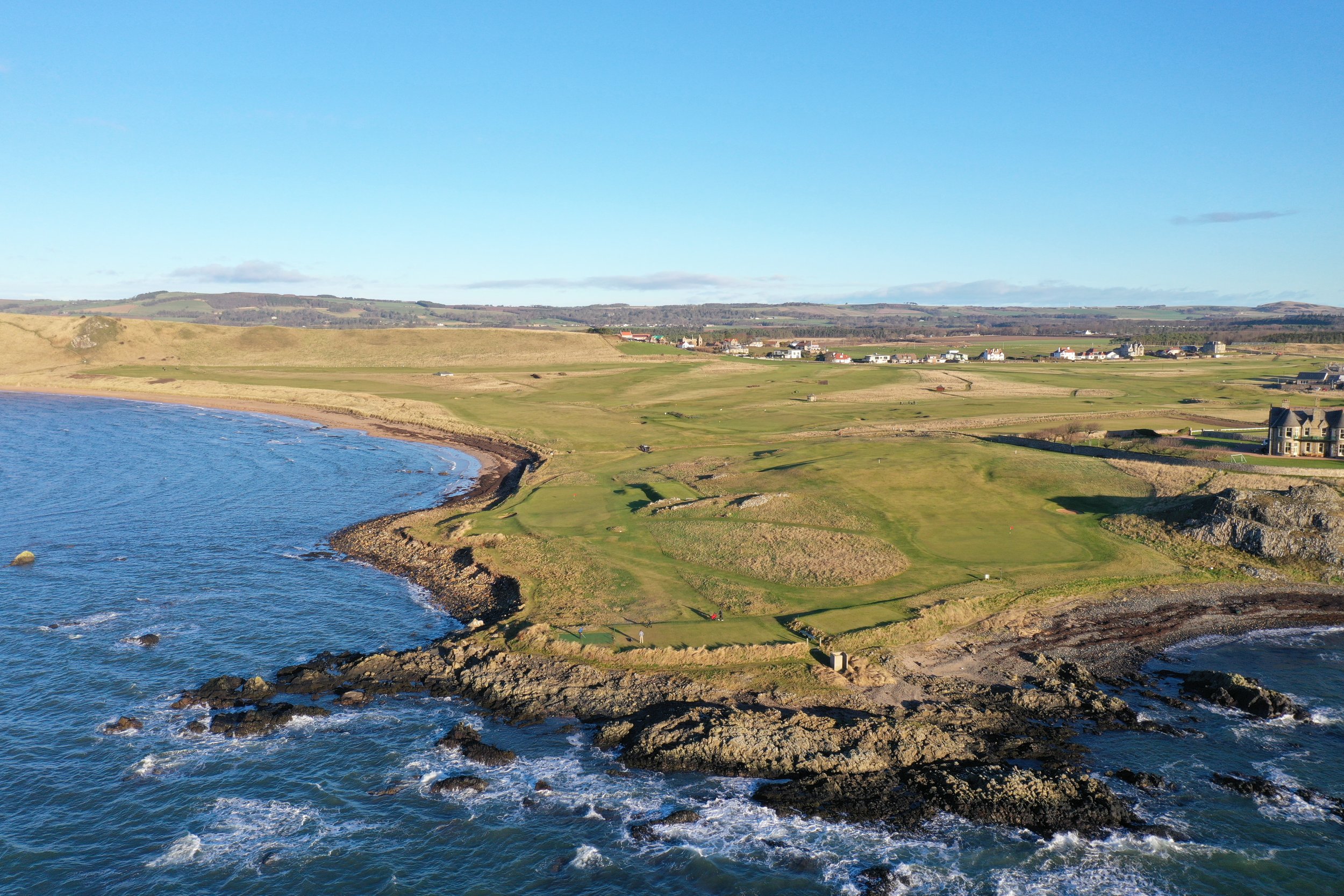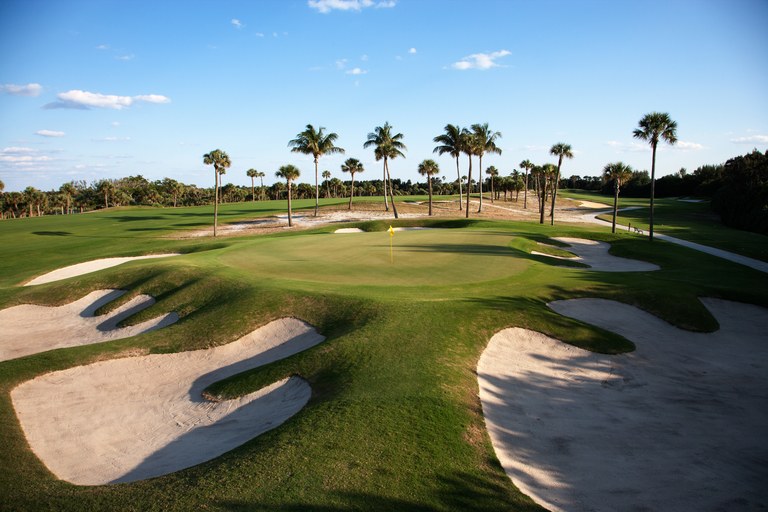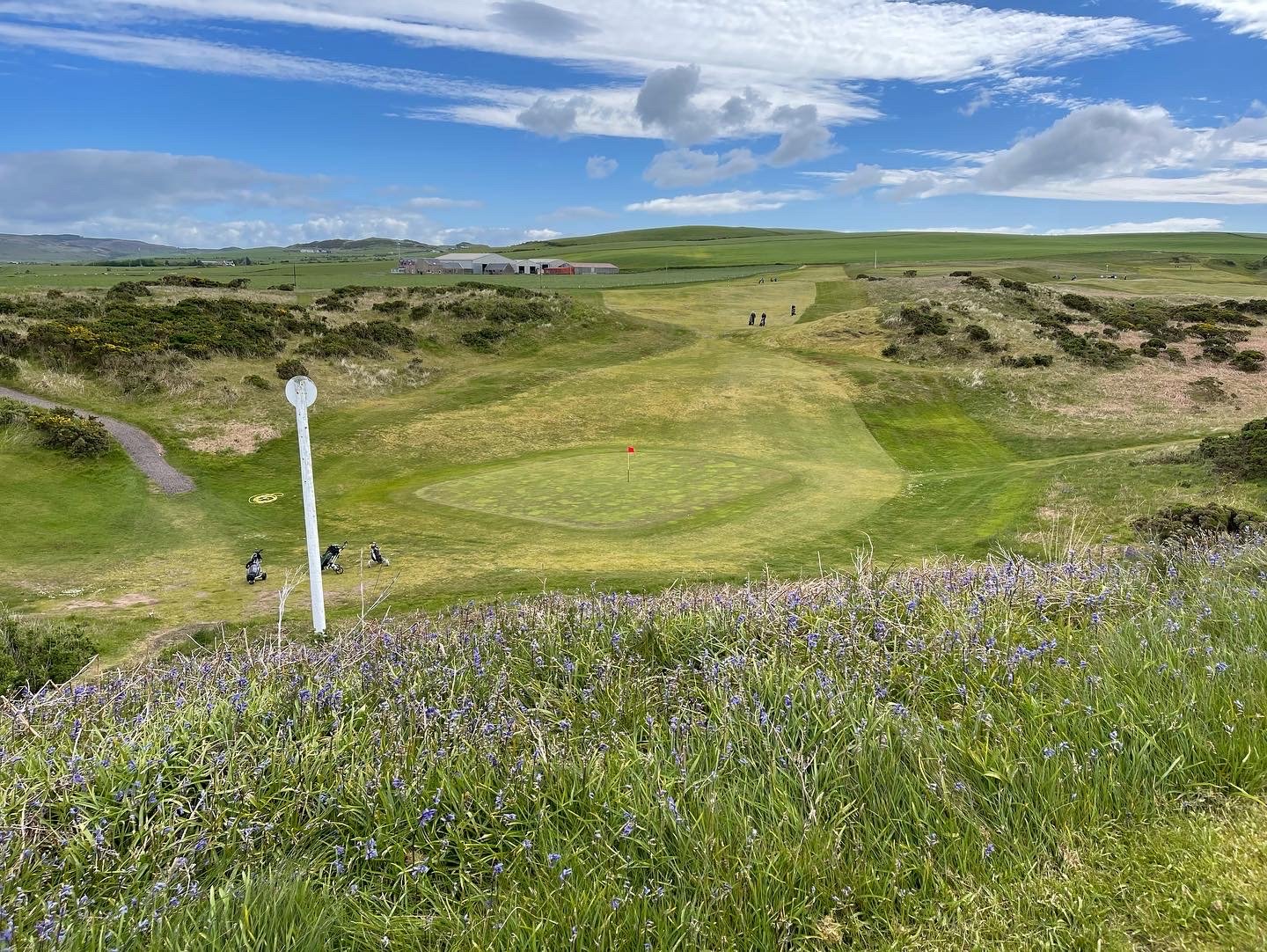The role is not without responsibility. The lists Chris produces can put courses on the map, but if a course drops significantly down a list, then golf club committees are likely to start asking questions. I spoke to him recently to find out more about the process for putting these lists together. Hopefully you find it interesting. And yes, I asked him if he gets offered bribes!
UK Golf Guy (UKGG): Tell me a little bit about how you got into the business of ranking golf courses?
Chris Bertram (CB): I initially worked on Golf World (and Today’s Golfer) as a sub-editor and the first issue I worked on happened to be the biennial GB&I Top 100. I didn’t have anything to do with the ranking, but I did all the features.
In those days there was just the GB&I and Continental Europe rankings really, every two years, but then we added England, Scotland, Ireland and Wales lists and I worked on those in collaboration with the legendary Jock Howard.
Somehow I was given the Continental European list to pull together by myself - in 2011 I think. I'd played about 23 of the 100 and I just hated it because my knowledge was so sketchy, meaning I was asking the opinions of someone in Portugal, someone in France, someone in Spain, someone in Italy and I was melding them together. While no ranking is ever a scientific process, that just felt especially random.
I’d played probably 80 of the GB&I Top 100 at that point - mainly from 2002 to 2009 - but my continental knowledge was poor and that’s when I started getting really serious about it. I never wanted to be ‘guessing’ ever again, and I haven’t. The list got much better as a result I think, changing a *lot* from the 2011 one. From ‘guessing’ - by which I mean relying largely on the views of others - in 2011, to when I finalise the 2023 list,, I am pretty sure I’ll have played all 100, from Norway to Turkey and France to Slovakia. I’m on 92 at the moment
UKGG: Tell me a little bit about the process for how you put a Top 100 list together.
CB: What I don’t do is just start a ranking at the beginning of a magazine cycle then finish it on deadline day. It’s a constantly ongoing process; researching courses (playing them!), liaising with panellists, recruiting panellists, speaking to architects, setting panellists tasks, planning features, and of course actually writing the descriptions.
Take the new England list. It’s been two years since the last one came out and a month hasn’t gone past when I’ve not been thinking about it. The fact it is that a Top 200 rather than 100 only intensified that task.
UKGG: The panel you put together must be a key part of the process. How do you go about putting it together?
CB: It absolutely is. I chair the panel and clearly play a key role in pulling all the views and marks together - and I think it is essential someone who has played most of the courses under consideration does this and is almost a little autocratic. But the panel are crucial, ensuring no stone is left unturned. In some lists, such as the continental courses and resorts one, I dominate a bit more compared to, say, Scotland or Ireland or GB&I, but I’ve never published a list where I wasn’t incredibly thankful for my panel.
It is really important not to just surround yourself with people who think the same way about courses as you do. Otherwise it becomes an echo chamber - and I admit that during Covid especially that happened a bit.
The number one thing is I'm looking for someone who's played widely, that's absolutely crucial. I don't want someone who gives me great insight about 18 courses of the 130 under consideration. Panel members should have played 70 percent of the list at a minimum, 80%+ usually. I just think it's absolutely crucial to be able to compare widely. I know others have different views on that, but I think it's absolutely vital.
UKGG: And do you think it matters what standard of golfers are on the panel?
CB: No, I don't. People read the magazine of all handicaps, so it’s important we represent everyone - the average handicap in Britain is more than 18! Most panellists are probably off 18 and under and there are a lot of us in the 9, 10, 11, 12 bracket. In 2023 we will be doing a ranking specifically by low-handicaps, which will be interesting.
UKGG: You tend not to have professionals on your panels. Why is that?
CB: I was involved when Nick Faldo was on the Golf World panel and I don't think it’s giving too much away to say that he wasn't slaving over the list for hours on end like the rest of us. He would say that he preferred Muirfield to The Old Course and things like that, which was useful but he just hadn’t played enough courses, as mad as that sounds, to contribute fully. He will have played the Sauntons of this world as an amateur but just hadn't played widely enough to really help and that’s the case with most touring pros. I’m not saying I know more about courses than a tour pro, I’m saying I know about more courses than most tour pros.
But it’s not always the case. Ronan Rafferty has played very widely and is just brilliant on the subject. He’s been on some panels before and I would love him to be on all of them. But he’s got lots on so isn’t always able to contribute.
UKGG: So the panel is a vital part about it. What about the criteria you use to score the courses? That must have a huge influence on the output? (The criteria Golf World uses are - Design 40 marks, Setting 15, Memorability 15, Playability 10, Consistency 10, Presentation 10)
CB: It has a massive impact. I decided the categories, in consultation with a few people, and the weighting is also crucial. You're never going to get people agreeing on the criteria but I look at it now and I think it's about right. Some people think that presentation is too low at 10% and would have that higher, but I think it’s about right. We don't always play the course when it’s in perfect condition - sometimes we play in the winter or when there’s been hollow tining the week before for example - and I think it's unfair to mark a course down because of that. Places that are a bit more raw - let’s say Askernish - lose a mark or two and places like Ferndown or Carnoustie that are exceptionally presented gain one, and one mark is crucial.
We print all the criteria marks and that immediately alerts the reader to a course which may have great design but the conditioning isn't always quite there. Printing the breakdown helps them know a bit more about what to expect when they’re deciding where to go. I don’t think we could be more transparent about who decides the ranking and on what basis.
UKGG: It's fair to say your criteria, unlike some others out there, is all about the course. So you don't take into account onsite facilities or the practice facilities or the quality of the clubhouse. Why is that?
CB: I want these rankings to be all about the course. It's hard enough ranking just the course anyway, never mind adding in other variables! As Rafferty said to me once, I don't want to know what the tea and scones are like!
UKGG: It's only the last 20 years that rankings have had such a profile. What do you see as the value in them? What's the end benefit?
CB: We’ll produce 13 different lists next year, covering a whole variety of areas and also budgets. I truly believe they help people make choices about where to go on a golf break and what to expect when they get there. If they've got a certain budget, for example, our lists will help them find four courses reasonably close to each other for under £60 or even under £35. No-one can surely say we aren’t bringing courses to people’s attention they might not have heard of.
Of course not everyone’s going to agree with the order - probably everyone on every panel would disagree with the final list. But I'm confident that we're identifying, say, 90 of the Top 100 in an area, country or price point. There’s never going to be a definitive list, but I’m confident we are getting most things right and that the rankings more accurately reflect what’s out there than ever before, simply because we are so much more aware ourselves of what is out there.
We're busting myths at times. That might sound a little bit arrogant, but we're not just going along with what's always been thought about places. If we don't think somewhere is quite as good as it is made out to be, then the list will change accordingly.
I had Turnberry at 15 in GB&I a few years ago and everyone thought I was a clueless. I thought it was living off the past frankly - the Duel in the Sun and its amazing setting. So we're not scared to go against received wisdom but we aren’t going to be contrarian for the sake of it. And because I left to work elsewhere for two years and the lists all went in a different direction during that period, there have been some big movement in the lists since then - that will settle down and I look forward to smaller ‘up and down’ numbers on your graphics…!
UKGG: There’s always going to be criticism of lists like this. Especially the high profile ones. Do you have to have a really thick skin or does every comment cut you to the quick?
CB: Some comments hurt, the nonsense ones when people claim a certain course must have been ranked that high because money changed hands or there was a nice burger eaten or nonsense like that. Or we are just making it up.
But if someone says, ‘I don't understand how course X can be below Course Y and here are my reasons why’ then I really like to hear that. Often there is absolutely nothing between the two courses and I’ll accept their points.
I don’t think I, or we, know it all. And there is no right or wrong - I give myself about three places ‘slack’ for courses in the top 10 (in other words we have them in their rightful place within about three spots), about seven in the top 25, at least 10 in the rest of the top 50 and then in the second 50, anything within about 20 spots.
That ‘slack’ doesn’t mean we’d be better off grouping in my view, because with grouping you still obviously have cut-offs that would grate.
UKGG: If someone comments on Instagram or Twitter about a course that you haven't been to or you don't think the panel have seen, do you make a point of getting there before the next list is out?
CB: Absolutely. That doesn't happen often though because we have a lot of crazily well-travelled panellists. Take Scotland - we've got three people that have played every course in the country and a fourth who’s about six short. So we're not just guessing.
But in the continent, for example, if someone says ‘have you seen…?’ I could not be more interested.
UKGG: Clearly you work for a commercial organisation, you’re not just doing this for fun and your publisher wants to make money. When the magazine comes out you presumably have an advertising sales team who are looking to bring in revenue. What role does that play in terms of how that ranking looks?
CB: It plays zero role in the order of the actual list itself. Clubs have tried to catch me out before, and asked if they pay their way to get higher up the ranking. It’s always a categorical ‘no, that's not how we do it’.
The one thing that I do is often reward anyone who’s supporting us with an advert with a bigger entry - a few more words for the listing or a bigger picture. Some people might dislike that tactic, but we need to get some support from clubs to keep the whole thing going. Without them there is no ranking and, without a ranking… Well OK, most people probably wouldn't lose any sleep over it, but I genuinely believe we are helping to lift the lid on a lot of these places.
UKGG: What's your personal coverage like across the big lists.
CB: I’ve played all the Top 100 in GB&I and then I’m in the 90s in most of the other big ones - Continental European courses, Continental European resorts, GB&I Resorts - and certainly Scotland and England. In Ireland I’m only at about 50 - the top 50 - but I have a very good Irish panel. Kevin Markham, who's played every course in Ireland, chairs that for me. Wales I’m on about 30, and we’ve just expanded that to a whopping 75 after I unearthed an incredible panel.
GB&I Links I’m missing Askernish and that’s it.
Middle East & Africa I’m missing the trio in Kuwait, Saudi, Bahrain and the Atlantic coast courses in Morocco.
As I said, I think it's absolutely crucial the person who's putting it all together has played the vast majority of courses. I know others don’t view it that way but I think it’s key.
UKGG: Do you get much feedback from the clubs, either positive or critical?
CB: Ha, you barely hear from someone when it's gone well, but that's just human nature, isn't it? It’s like golf itself - you tend to remember your bad shots more than the good ones, annoyingly.
But yes, I do hear sometimes and it can be scathing.
The nice comments - and its usually from a mid-ranking course that appreciates that we are encouraging people to go on golf breaks by publishing the lists - keep you going.
UKGG: What kind of negative comments have you had?
CB: That I'm an idiot, have no idea what I'm doing, I just make it up, that another ranking is the ‘official’ one, that I’m creating a list for a few people who drink Kummel, that to get on the panel you've got to wear plus-fours and play in The President's Putter. The last suggestion is complete nonsense! Total nonsense. It would be fair to say that panellists are generally well off because they've had the means to play all these courses. But we are not a cabal of minor aristocracy.
UKGG: Do any clubs ask for constructive criticism and what they can do to improve?
CB: Some do. And honestly the vicious ones are fewer than 10%. You'll then get 40% that ask questions of clarity, then you’ll get some who genuinely want to know what they need to do to feature.
Take Villa Padierna in Malaga. The marketing person emailed me to say that she couldn’t believe they weren’t on the Continental resorts list. She suggested I come down to experience it for myself and if they still didn’t make it in after that then, fair enough.
Now, there are two things about that. One, in my job I probably should have known about Villa Padierna. But two, it’s horrific for them and their marketing that I had never heard about it and no-one else had ever mentioned it to me! So, long story short, I went down, and the hotel is absolutely wonderful. I held my hands up and said ‘it is my fault’ and it went into the resorts list straight at number 26.
There's one in England, which is Bearwood Lakes, that will go up a lot in the next list because it’d been marked down too severely in some areas - year-round condition, design cleverness - and if I have anything about me, one thing is that I'm always open about saying if we get it wrong.
UKGG: Two of the lists you've done in the last couple years, which seem to have resonated a lot with people are the Under £60 and £35 lists.
CB: They're perhaps the best examples of what I was saying about the worth of the lists. They highlight clubs that many, many people have never heard about. You can use those lists to put together an itinerary that isn't eye-wateringly expensive. Or mix and match the GB&I superstars in with some of the Under £60 or £35 ones. I do think that is a good service for golfers, and that is the whole point of the rankings - to help people make the best possible choices when they’re planning away days and breaks. Those price-point lists also stop and makes you think whether other courses should be quite as expensive as they are.
UKGG: Do you think rating lists like these have actually fuelled green fee increases at the top end?
CB: No, I don't think they do. I've literally never thought of that and I don't think they do. A lot of the increase in green fees is clubs trying to get on the overseas bandwagon.
There are a lot of elite clubs in the £170-£300 which I totally understand. It's a lot of money but I understand why people, especially from overseas, are willing to pay that.
What I don't really like are the clubs just down the road from them that are expensive purely so that overseas golfers looking at them assume the high price means they must be great too.
The effect of that is that a fourball from Birmingham can't go up to the Highlands and play Course X because it's just too expensive for them. And I really don’t like that.
What I don't understand is how can Dunaverty present a course in the perfectly adequate condition it is, while another course in the same country with the same costs says they have to charge three times as much - and it's not a better golf course or in wildly better condition. I don't understand that. How can they do it?
UKGG: What’s the favourite list you do?
CB: Continental Europe is still the one. It’s so different from so many of the others. The GB&I list in some ways is my least favourite because probably 75% of the courses, well, anyone could probably name them. But for the continent of Europe we’ve discovered so many new places. I've been to so many different cool places and seen so many different courses.
It’s enhanced my education of architecture enormously because I've seen some of the classics by the great architects, the golden age architects in Europe, they just seem to come alive on the continent. And I love sorting the good modern ones from the… well, trash. People spend a lot of money going abroad to play golf and I like trying to play a part in showing where the really good courses are.
UKGG: And I guess for something like that your judgment is really important? So take for example, Lofoten which I probably hadn't heard of until it came up really high in one of your rankings and then I looked at some other rankings and it was in a much lower position. Do you doubt yourself sometimes when you make a big call like that?
CB: Yeah, that’s a great example. Lots of people had seen pictures of it, but until you get there, you don't know if it's actually a good golf course or if it's just nice to look at.
But after spending time there I was confident about it. But it was a bit of a gamble. No-one had it ranked anywhere. It was my judgement and mine alone. Now it’s in World Top 100 lists, not just mine.
Equally, some people might go to Lofoten, card and pencil golfers, and maybe won't love it to be honest. So, while I was confident, I did still agonise. You could make yourself look like a real idiot if you got carried away with the setting and midnight golf.
So when you went there I was watching on Twitter to see if you were enjoying it. If you'd come away thinking ‘I kind of get it, but not really’ then I'd be worried I’d over-egged it. So I'm happy to take the pressure of the judgment, but I absolutely agonise over the big calls like that. I went too strong on Trump Aberdeen initially and you can’t afford too many random calls or you start to lose any trust that you have. I do like to be bold, but not reckless.
UKGG: So what courses do you want to see next?
CB: Maybe I'm talking too much about the European list but this year that's the big one and it’s also the one where I am bringing most new names to people’s attention. I'm aiming to play all 100 on that list so I have a few to do. Denmark and Madrid are important places for me to get to.
UKGG: And then they keep on building more and so it just keeps on going.
CB: Yes, Comporta is the big new one to see. It's always fantastic when there's a really good new course to talk about in a ranking - and I’m expecting big things from that. I find it hard to believe it won’t be top 20 minimum. It's exciting when no-one's seen it before and the chances are I've been before anyone else. So you're actually doing some journalism there rather than just being Judith Chalmers!







